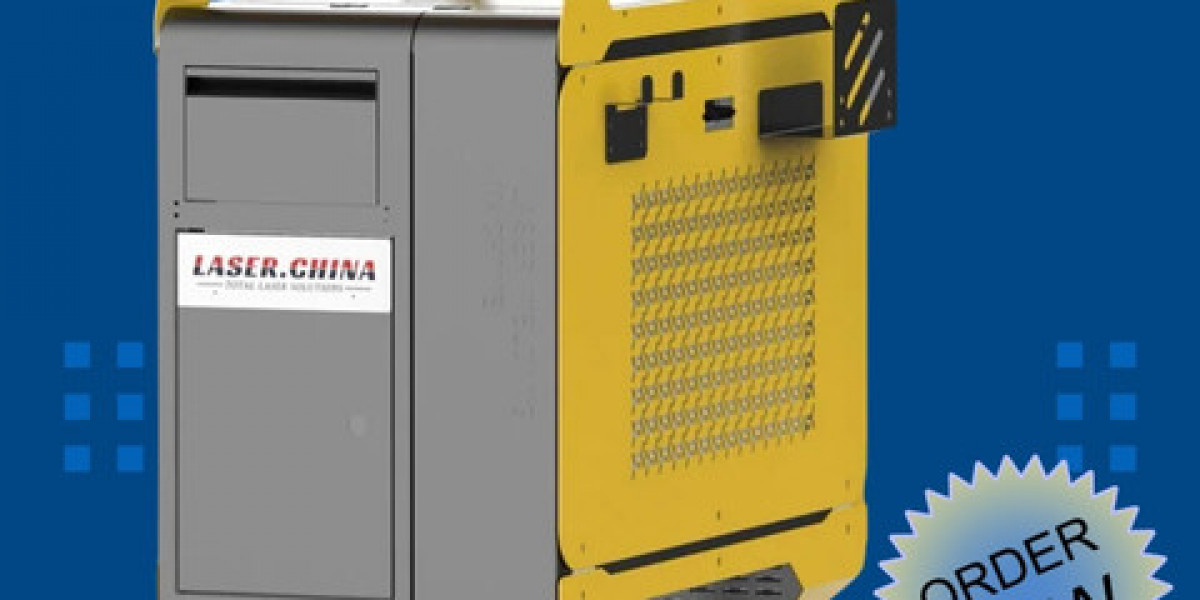This isn’t science fiction or a futuristic lab tool. It's real, in use, and transforming how industries clean surfaces with precision, speed, and minimal impact on the underlying material.
What Is a Laser Paint Remover?
A laser paint remover is a device that emits a focused beam of light energy to vaporize or ablate the paint layer from a surface. The laser pulses generate high temperatures at a microscopic level, breaking the bond between the coating and the base material. The paint doesn’t melt, smear, or burn traditionally—it simply evaporates, leaving a clean substrate beneath.
It’s important to understand that this method isn’t merely a novelty. It’s quickly becoming the standard in industries ranging from aerospace to classic car restoration, marine equipment refurbishment to military-grade asset maintenance.
How It Works – A Simple Breakdown
Laser paint removal operates through a process known as laser ablation. The beam interacts only with the coating layer due to the difference in absorption rates between paint and the base metal. The laser doesn't grind or scrape. It doesn't use media to bombard the surface. It eliminates the coating molecule by molecule with light alone.
When the laser contacts the paint:
The paint absorbs the light energy.
This energy converts into heat rapidly at the point of impact.
The heat causes the material to disintegrate and vaporize.
A fume extraction system (integrated or external) collects the removed material.
This level of control isn't achievable with chemical strippers or abrasive methods.
Where Is a Laser Paint Remover Used?
The laser paint remover has penetrated sectors where traditional methods simply fail or are too costly in terms of labor, downtime, or risk of substrate damage.
Automotive Industry:
Restoring classic vehicles often involves delicate surface prep. Sanding or chemical baths risk damaging valuable steel or aluminum panels. A laser paint remover can target only the old layers without affecting the underlying material, making it ideal for restoration shops, high-end garages, and performance tuning businesses.
Aerospace & Aviation:
Aircraft require periodic inspections. For that, coatings must be removed without altering the shape or integrity of the panels. Manual methods risk fatigue or inconsistencies. Laser systems ensure uniformity, maintaining the material's engineering specifications. A single misstep with sandblasting can cost thousands—laser-based cleaning prevents that.
Military Equipment:
Combat vehicles, missile systems, and field gear undergo frequent maintenance. Paint removal using chemicals poses an environmental hazard and is logistically complex in remote or sensitive areas. Portable laser paint removers allow quick, controlled paint stripping without generating waste or requiring disposal of contaminated fluids.
Shipyards & Marine:
Salt corrosion is a nightmare. Paint needs to be reapplied, but only after full removal of the old layer. Traditional scraping or sandblasting is slow and environmentally damaging near water bodies. Laser systems allow on-ship maintenance, even targeting hard-to-reach welded seams or corrosion-prone rivets.
Laser Paint Remover in Practice – A Real Scenario
Let’s take a real-world scenario:
A European railway maintenance company faced delays due to traditional paint stripping on their aging fleet. Paint removal on train chassis involved three days of grinding, sanding, and repaint prep for each car—along with dust hazards and high workforce cost.
Upon integrating a mobile laser paint remover, the paint stripping time per unit dropped to under 8 hours. Not only was labor cost reduced, but the risk of metal fatigue from mechanical abrasion disappeared. They documented a 62% increase in project efficiency within six months.
Environmental Considerations and Safety
Unlike chemical-based strippers that produce toxic runoff or abrasive blasting that creates airborne particulates, laser paint removal is clean. The paint is turned into gas or fine dust that’s captured immediately by fume extraction units. There’s no secondary waste to dispose of—no sand, no water sludge, no chemical residue.
Operators are protected by safety shields, interlocks, and eyewear, and laser heads can be fully automated or robotically mounted. This drastically reduces operator exposure and keeps the workspace cleaner.
Cost Efficiency Beyond Surface Level
While the upfront cost of a laser paint remover system is higher than a sandblaster or chemical station, the total cost of ownership paints a different picture.
No consumables (no sand, no chemicals).
Low maintenance.
No waste disposal costs.
Shorter prep time.
Higher precision (fewer reworks).
Longer equipment lifespan.
Industries that transition to laser paint removers typically recover investment within 12–18 months, especially in operations requiring consistent paint stripping routines.
Portability and Customization
Today’s laser paint remover models range from benchtop units for small-scale applications to fully mobile, trolley-mounted systems. Some models come with handheld scanning heads, allowing technicians to clean large structures on-site—without moving the object. The versatility is astonishing.
Whether it’s removing paint from turbine blades in a power station or preparing a bridge for repainting, the device adapts to scale. Some can even operate in automated production lines, syncing with robotic arms for continuous operations.
Why The Shift Is Inevitable
The real reason industries are shifting to laser systems isn’t just about speed or cleanliness. It’s about reliability. Manual stripping methods are inconsistent. Chemicals can vary in effectiveness based on temperature and humidity. Abrasives can overdo or underdo the job. But with laser paint removal, once the parameters are set—pulse width, frequency, scanning speed—you get repeatable, traceable results every single time.
In high-stakes industries, that consistency is priceless.
Final Thoughts
The era of messy, slow, and environmentally damaging paint removal is fading fast. The laser paint remover isn’t just another tool—it’s a solution for industries that demand speed, precision, and responsibility. Whether you're in aerospace engineering, vehicle restoration, or industrial maintenance, integrating laser-based removal means fewer delays, fewer errors, and a cleaner future.
Once adopted, it rarely gets replaced. That’s because once you've experienced the precision of light over brute force, you won’t go back. The question isn’t if your process needs laser paint removal—it’s how soon you’ll make the switch.














